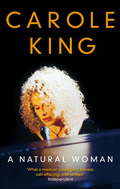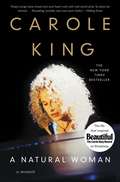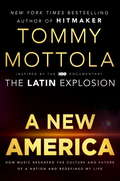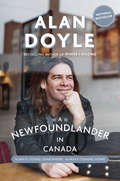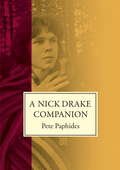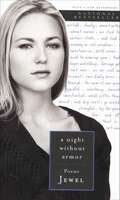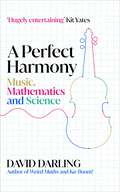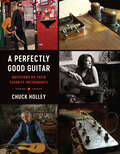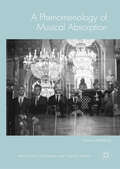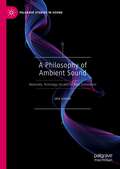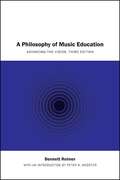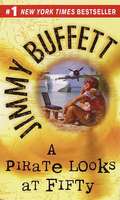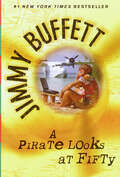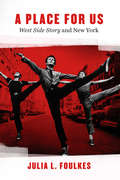- Table View
- List View
A Natural Woman: A Memoir
by Carole KingA memoir by the iconic singer-songwriter chronicling her story from her beginnings in Brooklyn through her remarkable success as one of the world's most acclaimed musical talents, to her present day as a leading performer and activist. From her marriage to Gerry Goffin, with whom she wrote dozens of songs that hit the charts, to her own achievements, notably with 'Tapestry', which remained on the charts for more than six years, to her experiences as a mother, this memoir chronicles one of music's most successful and fascinating stars. The book includes dozens of photos from King's childhood, her own family, and behind-the-scenes images from her performances over the years.
A Natural Woman: A Memoir
by Carole KingRead the New York Times Bestselling memoir that is "revealing, humble, and cool-aunt chatty" about the incredible life that inspired the hit Broadway musical Beautiful (Rolling Stone). Carole King takes us from her early beginnings in Brooklyn, to her remarkable success as one of the world's most acclaimed songwriting and performing talents of all time. A Natural Woman chronicles King's extraordinary life, drawing readers into her musical world, including her phenomenally successful #1 album Tapestry, and into her journey as a performer, mother, wife and present-day activist. Deeply personal, King's long-awaited memoir offers readers a front-row seat to the woman behind the legend. The book will include dozens of photos from King's childhood, her own family, and behind-the-scenes images from her performances.
A New America: How Music Reshaped the Culture and Future of a Nation and Redefined My Life
by Tommy MottolaThe long-anticipated companion book to the groundbreaking HBO documentary The Latin Explosion by renowned music producer Tommy Mottola. Legendary music mogul, entertainment impresario, and New York Times bestselling author Tommy Mottola explores and expounds on his lifelong love of Latin music, its influence on his life and career, and its ever-growing influence in America. Tommy Mottola discovered a passion for Latin music when he was a small child on the streets of the Bronx, where he fell in love with the energy and rhythm of the legendary Tito Puente. It is a love he carries with him to this day. In A New America, Mottola explores the societal and cultural impact the Latino community and its music has had on America by sharing behind-the-scenes stories from his own life and his connection to the Latin sound throughout the decades--from his initial fascination with Latin music, which started with Puente, to the mainstream success of Ritchie Valens, to the groove-laden guitar wizardry of Carlos Santana. Along the way, Mottola reveals heartfelt accounts of his longtime collaboration and friendship with Gloria Estefan and her husband, Emilio, the meteoric rise and tragic end of Selena, and his orchestration of the Latin Explosion of the 1990s, which launched megastars such as Marc Anthony, Ricky Martin, Shakira, and Jennifer Lopez. But A New America is more than a story about music and musicians. It is the story of a culture that continues to grow and influence America in all its aspects and an irresistible sound that continues to move and inspire the nation.From the Hardcover edition.
A New Dictionary of Music
by Arthur JacobsWhat is a fugue? What is the difference between a saxophone and a saxhorn? Who besides Puccini wrote an opera called La Boheme? In what year, was the National Broadcasting Company Orchestra formed under Arturo Toscanini's direction? These and thousands of similar questions are answered in this comprehensive dictionary that remains unrivaled as a single-volume summary. A New Dictionary of Music is a basic reference work for anyone interested in music, whether performer or layman.It covers orchestral, solo, choral and chamber music, opera, and (in its musical aspects) the ballet. There are entries for composers (with biographies and details of compositions); works well known by their titles, such as operas and symphonic poems; orchestras, performers and conductors of importance today; musical instruments (including those of the dance and brass bands); and, technical terms. English names and terms are used whenever possible, but foreign terms in general use are cross-referenced. Particular importance has been attached to bringing the reader abreast of new musical developments.The composers and musical works chosen were those most likely to be encountered. Where an opera is given an entry, a brief explanation of the title follows. Similarly explication is provided for other works bearing literary or otherwise allusive titles. Among performers and conductors, only the following are included: those who, although dead, continue to be prominent through recorded performances (e.g. Gigli); the highest-ranking international artists of today, plus a very few apparently on the verge of attaining that rank; and, a few who, though not necessarily at the very head of their profession, are closely associated with composers in bringing out new works, or are conductors in charge of important orchestras.
A New Philosophy of Opera
by Yuval SharonFrom “the most imaginative director in the US” (New York Times) comes this generational work with a vision for transforming opera into a powerhouse cultural phenomenon. "This book builds a compelling roadmap for the future of opera, and how it can truly be accessible for everyone." —Gustavo Dudamel Known as opera’s “disrupter-in-residence,” director Yuval Sharon has never adhered to the art form’s conventions. In his many productions in both the United States and Europe, he constantly challenges the perception of opera as aloof by urging, among other things: performing operas in “non-places,” such as parking lots; encouraging the use of amplification; and shuffling the traditional structure of classic works, like performing Puccini’s La bohème in reverse order, ending not with the tubercular heroine Mimi’s death but with her first falling in love. With A New Philosophy of Opera, Sharon has crafted a radical and refreshing book that can act as an introduction to the art form for the culturally curious, or as a manifesto for his fellow artists. In an engaging style that ranges from the provocative to the personal, Sharon offers a 360-degree view of the art form, from the audience experience to the artist’s process; from its socially conscious potential to its economic reality; and from its practical to its emotional and spiritual dimensions. Surveying the role of opera in the United States and drawing on his experiences from Berlin to Los Angeles, Sharon lays out his vision for an “anti-elite opera” that celebrates the imagination and challenges the status quo. With an illustrated and unconventional history of the art form (not following a straight line but tracing a fantastical “time-curve”) weaving throughout the book, Sharon resists the notion of the opera as “dying” and instead portrays it as a glorious chaos constantly being reborn and reshaped. With its advocacy of opera as an “enchanted space” and its revolutionary message, A New Philosophy of Opera is itself a work of art—a living book with profound philosophical implications—that will stand the test of time.
A New and Concise History of Rock and R&B through the Early 1990s
by Eric CharryA New and Concise History provides a strong foundation for understanding how music, the music industry, and American culture intersect. Ethnomusicologist Eric Charry's innovative and road-tested teaching style is brought to you in this textbook suitable for general education courses in music. The book is organized around a series of timelines, tables, and figures created by the author, and provides fresh perspectives that bring readers into the heart of the social and cultural importance of the music. Charry lays out key contemporary theoretical issues, covers the technical foundations of the music industry, and provides a capsule history of who did what when, with particular emphasis on the rapid emergence of distinct genres and subgenres. The book's figures distill the history and provide new insight into understanding trends. Over 1000 artists, albums, and songs are included here, such as Muddy Waters, Elvis Presley, Bob Dylan, Aretha Franklin, the Velvet Underground, Janis Joplin, Jimi Hendrix, David Bowie, Stevie Wonder, Prince, Madonna, Talking Heads, and Public Enemy.
A Newfoundlander in Canada: Always Going Somewhere, Always Coming Home
by Alan DoyleFollowing the fantastic success of his bestselling memoir, Where I Belong, Great Big Sea front man Alan Doyle returns with a hilarious, heartwarming account of leaving Newfoundland and discovering Canada for the first time.Armed with the same personable, candid style found in his first book, Alan Doyle turns his perspective outward from Petty Harbour toward mainland Canada, reflecting on what it was like to venture away from the comforts of home and the familiarity of the island. Often in a van, sometimes in a bus, occasionally in a car with broken wipers "using Bob's belt and a rope found by Paddy's Pond" to pull them back and forth, Alan and his bandmates charted new territory, and he constantly measured what he saw of the vast country against what his forefathers once called the Daemon Canada. In a period punctuated by triumphant leaps forward for the band, deflating steps backward and everything in between—opening for Barney the Dinosaur at an outdoor music festival, being propositioned at a gas station mail-order bride service in Alberta, drinking moonshine with an elderly church-goer on a Sunday morning in PEI—Alan's few established notions about Canada were often debunked and his own identity as a Newfoundlander was constantly challenged. Touring the country, he also discovered how others view Newfoundlanders and how skewed these images can sometimes be. Asked to play in front of the Queen at a massive Canada Day festival on Parliament Hill, the concert organizers assured Alan and his bandmates that the best way to showcase Newfoundland culture was for them to be towed onto stage in a dory and introduced not as Newfoundlanders but as "Newfies." The boys were not amused. Heartfelt, funny and always insightful, these stories tap into the complexities of community and Canadianness, forming the portrait of a young man from a tiny fishing village trying to define and hold on to his sense of home while navigating a vast and diverse and wonder-filled country.
A Nick Drake Companion
by Pete PaphidesThis short book, taken from Remembered For A While, tells the stories and circumstances that surround every known recording in Nick Drake's canon (as well as a few unrecorded songs). The result is like a detailed, extended series of liner notes, something to read while sitting in your favourite chair, in your favourite room, listening to the imperishably beautiful music they describe. A Nick Drake companion.
A Nick Drake Companion
by Pete PaphidesThis short book, taken from Remembered For A While, tells the stories and circumstances that surround every known recording in Nick Drake's canon (as well as a few unrecorded songs). The result is like a detailed, extended series of liner notes, something to read while sitting in your favourite chair, in your favourite room, listening to the imperishably beautiful music they describe. A Nick Drake companion.
A Night Without Armor: Poems
by JewelOne of the most respected artists in popular music today, Jewel is much more than a music industry success with her debut album selling more than 10 million copies. Before her gifted songwriting comes an even more individual art: Poetry. Now available in paperback, A Night without Armor highlights the poetry of Jewel taken from her journals which are both intimate and inspiring, to be embraced and enjoyed. Writing poems and keeping journals since childhood, Jewel has been searching for truth and meaning, turning to her words to record, to discover, and to reflect. In A Night Without Armor, her first collection of poetry, Jewel explores the fire of first love, the lessons of betrayal, and the healing of intimacy. She delves into matters of the home, the comfort of family, the beauty of Alaska, and the dislocation of divorce. Frank and honest, serious and suddenly playful, A Night Without Armor is a talented artist's intimate portrait of what makes us uniquely human.
A Night at the Opera: An Irreverent Guide to The Plots, The Singers, The Composers, The Recordings
by Denis FormanThis slightly irreverent guide to opera summarizes the plots of 17 of the world's great operas, including Aida, La Boheme, and Carmen, and describes their characters, artists, and composers.
A Passion for Polka: Old-Time Ethnic Music in America
by Victor GreeneNot so long ago, songs by the Andrews Sisters and Lawrence Welk blasted from phonographs, lilted over the radio, and dazzled television viewers across the country. Lending star quality to the ethnic music of Poles, Italians, Slovaks, Jews, and Scandinavians, luminaries like Frankie Yankovic, the Polka King, and "Whoopee John" Wilfart became household names to millions of Americans. In this vivid and engaging book, Victor Greene uncovers a wonderful corner of American social history as he traces the popularization of old-time ethnic music from the turn of the century to the 1960s. Drawing on newspaper clippings, private collections, ethnic societies, photographs, recordings, and interviews with musicians and promoters, Greene chronicles the emergence of a new mass culture that drew heavily on the vivid color, music, and dance of ethnic communities.In this story of American ethnic music, with its countless entertainers performing never-forgotten tunes in hundreds of small cities around the country, Greene revises our notion of how many Americans experienced cultural life. In the polka belt, extending from Connecticut to Nebraska and from Texas up to Minnesota and the Dakotas, not only were polkas, laendlers, schottisches, and waltzes a musical passion, but they shone a scintillating new light on the American cultural landscape. Greene follows the fortunes of groups like the Gold Chain Bohemians, illuminating the development of an important segment of American popular music that fed the craze for international dance music. And even though old-time music declined in the 1960s, overtaken by rock and roll, a new Grammy for the polka was initiated in 1986. In its ebullience and vitality, the genre endures.
A Perfect Harmony: Music, Mathematics and Science
by David DarlingFrom the earliest of civilisations, humans have found ways to make music, whether through makeshift drums or artfully drilled bone flutes. But how did music – effectively little more than a series of certain tones and rhythms – become so integral to the human experience? Untangling the curious links between notes and number, musical perception, psychology and physics, David Darling examines the fascinating science behind music, from its Palaeolithic origins to the present. Revealing surprising connections and busting pervasive myths, A Perfect Harmony asks: Why do musicians tend to be better at maths than non-musicians? Why do we find some pieces sad and others happy? Will playing Mozart to babies predispose them to genius? Could an AI write the perfect symphony?
A Perfectly Good Guitar: Musicians on Their Favorite Instruments
by Chuck HolleyAsk guitar players about their instruments, and you&’re likely to get a story—where the guitar came from, or what makes it unique, or why the player will never part with it. Most guitarists have strong feelings about their primary tool, and some are downright passionate about their axes. Chuck Holley is a professional photographer and writer who loves music and listening to musicians talk about their trade. For several years, he has been photographing guitarists with their prized instruments and collecting their stories. This beautifully illustrated book presents these stories in revelatory photographs and words. The guitarists included in this book range from high-profile performers, including Rosanne Cash, Guy Clark, Laurence Juber, Jorma Kaukonen, JD Souther, Bill Frisell, Dave Alvin, and Kelly Willis, to renowned studio musicians and band members. Holley&’s beautifully composed photographs portray them with their favorite guitar, including detail shots of the instrument. Accompanying the photographs are the musicians&’ stories about the Gibsons, Fenders, Martins, and others that have become the guitar in their lives, the one that has a special lineage or intangible qualities of sustain, tone, clarity, and comfort that make it irreplaceable. Several musicians talk about how the guitar chose them, while others recount stories of guitars lost or stolen and then serendipitously recovered. Together, these photographs and stories underscore the great pleasure of performing with an instrument that&’s become a trusted friend with a personality all its own.
A Performer's Guide to Renaissance Music (Publications of the Early Music Institute)
by Jeffery Kite-PowellRevised and expanded since it first appeared in 1991, the guide features two new chapters on ornamentation and rehearsal techniques, as well as updated reference materials, internet resources, and other new material made available only in the last decade.The guide is comprised of focused chapters on performance practice issues such as vocal and choral music; various types of ensembles; profiles of specific instruments; instrumentation; performance practice issues; theory; dance; regional profiles of Renaissance music; and guidelines for directors. The format addresses the widest possible audience for early music, including amateur and professional performers, musicologists, theorists, and educators.
A Performer's Guide to Seventeenth-Century Music (Publications of the Early Music Institute)
by Jeffery Kite-PowellRevised and expanded, A Performer's Guide to Seventeenth Century Music is a comprehensive reference guide for students and professional musicians. The book contains useful material on vocal and choral music and style; instrumentation; performance practice; ornamentation, tuning, temperament; meter and tempo; basso continuo; dance; theatrical production; and much more. The volume includes new chapters on the violin, the violoncello and violone, and the trombone—as well as updated and expanded reference materials, internet resources, and other newly available material. This highly accessible handbook will prove a welcome reference for any musician or singer interested in historically informed performance.
A Phenomenology of Musical Absorption
by Simon HøffdingThis book presents a detailed analysis of what it means to be absorbed in playing music. Based on interviews with one of the world’s leading classical ensembles, “The Danish String Quartet” (DSQ), it debunks the myth that experts cannot reflect while performing, but also shows that intense absorption is not something that can be achieved through will, intention, prediction or planning – it remains something individuals have to be receptive to. Based in the phenomenological tradition of Husserl and Merleau-Ponty as well as of Dan Zahavi and Shaun Gallagher, it lays out the conditions and essential structures of musical absorption. Employing the lived experience of the DSQ members, it also engages and challenges core ideas in phenomenology, philosophy of mind, enactivism, expertise studies, musical psychology, flow theory, aesthetics, dream and sleep studies, psychopathology and social ontology, and proposes a method that integrates phenomenology and cognitive science.
A Philosophy of Ambient Sound: Materiality, Technology, Art and the Sonic Environment (Palgrave Studies in Sound)
by Ulrik SchmidtThis book presents the first book-length study of ambient sound as a key issue in sound studies and sonic philosophy. Taking a broad, media-philosophical approach, it explores ambient sound as a basic dimension of the sonic environment, sonic technologies, sonic arts and the material staging of listening.Through analyses of key concepts such as surroundability, mediatization, immanence, synthetization and continuous variation, the book elucidates how ambient aspects of sound influence our conceptions of what sound is and how it affects us by exposing sound’s relation to basic categories such as space, time, environment, medium and materiality. It also illuminates how the strategic production of ambient sound constitutes a leading aesthetic paradigm that has been a decisive factor in the shaping of the modern sonic environment – from key developments in experimental and popular music, sound art and cinematic sound design to the architectural-technological construction of listening spaces in concert halls and theaters and in current streaming infrastructures, digital surround sound and the everyday aesthetics of headphone listening.
A Philosophy of Music Education: Advancing the Vision, Third Edition
by Bennett ReimerBennett Reimer's A Philosophy of Music Education asserts that the nature and value of music education are determined primarily by the nature and value of music. Originally published in 1970 (with the third edition originally published in 2003), this text relates findings in the field of aesthetics to their implications for the practice of music education, thus emphasizing practical applications that students and future educators can employ in their teaching and learning. It addresses an increasingly diverse world in which music is viewed not as a singular practice but as a multitude of related practices. Reimer believes that music has characteristics that make it recognizably and distinctively a practice or an "art"; that these characteristics can be identified to a reasonable and useful degree (but no doubt never definitively); that music is of value to humans and their communities in a variety of ways related to these characteristics; and that the primary mission of music education is to make musical values widely and deeply available. Each chapter includes case studies ("Riffs") and questions for discussion/exploration ("Etudes") that enhance student learning. This reprint edition includes a new introduction by Peter R. Webster that sets Reimer's work in the context of the development of music education pedagogy and illuminates why this remains an important text for today's students. An excellent introductory text for undergraduate or more advanced music education students, A Philosophy of Music Education remains the best single introduction to this important and growing field.
A Philosophy of Playing Drum Kit: Magical Nexus (Elements in Twenty-First Century Music Practice)
by Gareth Dylan SmithThe author is a drummer with experience in a variety of musical genres and contexts, with emphasis on rock and related styles. This auto ethnographic Element presents the author's philosophy of playing drum kit. The text explains how playing drum kit matters to this musician and may resonate with others to whom making music matters in similar ways. The Element contains audio files of music in which the author plays drum kit in the ensemble settings described. There are photos of the author's drums and of him drumming. Based on June Boyce-Tillman's non-religious model of holistic spirituality and Tim Ingold's notion of correspondences, the author describes how playing drum kit enables him to experience transcendence – the magical nexus at which Materials, Construction, Values/Culture and Expression meet. Each of these domains, and the magic derived from their combination, is illustrated through examples of the author's live and recorded musical collaborations.
A Pirate Looks at Fifty
by Jimmy BuffettBuffett takes the occasion of his 50th birthday to tell us about himself, doing so with candor and modesty, talking about his marriage, his children and 'a lot of things on the good old planet Earth'
A Pirate Looks at Fifty
by Jimmy Buffett#1 NEW YORK TIMES BESTSELLER • Rock & Roll Hall of Fame inductee Jimmy Buffett offers his philosophy on life and how to live it, &“like sitting with Buffett at a beachside bar, listening to him spin tales&” (Time). &“Buffett took his family on a three-week trek around the Caribbean. . . . His colorful travelogue is interspersed with memoirs of his youth and music career—both of which revolve around his continuing search for the perfect fishing spot.&”—USA TodayFor Parrotheads, armchair adventurers, and anyone who appreciates a good yarn and a hearty laugh, here is the ultimate backstage pass. You&’ll read the kind of stories Jimmy usually reserves for his closest friends and you'll see a wonderful, wacky life through the eyes of the man who's lived it. Jimmy takes us from the legendary pirate coves of the Florida Keys to the ruins of ancient Cartegena. Along the way, we hear a tale or two of how he got his start in New Orleans, how he discovered his passion for flying planes, and how he almost died in a watery crash in Nantucket harbor. We follow Jimmy to jungle outposts in Costa Rica and on a meandering trip down the Amazon, through hair-raising negotiations with gun-toting customs officials and a three-year-old aspiring co-pilot. And he is the inimitable Jimmy Buffett through it all.
A Piñata in a Pine Tree: A Latina Twelve Days of Christmas
by Pat Mora"The Twelve Days of Christmas" has been a beloved carol for centuries. In this joyful new version, the traditional gifts have been replaced by Latin-flavored offerings with a tinge of magic. A secret amiga delivers presents to a little girl, filling the pages with brightly colored piñatas, burritos bailando (dancing donkeys), lunitas cantando (singing moons), and more. There are things to find and count and words in Spanish on every page, with pronunciations provided right in the pictures, and a glossary and music at the end of the book.
A Place for Us: “West Side Story” and New York
by Julia L. FoulkesFrom its Broadway debut to the Oscar-winning film to countless amateur productions, West Side Story is nothing less than an American touchstone--an updating of Shakespeare vividly realized in a rapidly changing postwar New York. That vision of postwar New York is at the heart of Julia L. Foulkes's A Place for Us. A lifelong fan of the show, Foulkes became interested in its history when she made an unexpected discovery: scenes for the iconic film version were shot on the demolition site destined to become part of the Lincoln Center redevelopment area--a crowning jewel of postwar urban renewal. Foulkes interweaves the story of the creation of the musical and film with the remaking of the Upper West Side and the larger tale of New York's postwar aspirations. Making unprecedented use of director and choreographer Jerome Robbins's revelatory papers, she shows the crucial role played by the political commitments of Robbins and his fellow gay, Jewish collaborators, Leonard Bernstein and Arthur Laurents. Their determination to evoke life in New York as it was actually lived helped give West Side Story its unshakable sense of place even as it put forward a vision of a new, vigorous, determinedly multicultural American city. Beautifully written and full of surprises for even the most dedicated West Side Story fan, A Place for Us is a revelatory new exploration of an American classic.
A Poetry Precise and Free: Selected Madrigals of Guarini
by Nicholas JonesA Poetry Precise and Free collects 150 lyric poems by the Renaissance Italian poet Giovanni Battista Guarini in new translations, accompanied by the Italian originals and commentary that will enlighten and engage both scholars and general readers. Guarini’s madrigals provide insight into northern Italian court culture of the late Renaissance, when poetry and music were enjoyed as companion arts. Hundreds of composers of Guarini’s day set his lyric poems to music. Primarily known today in their vocal settings, most famously those of Claudio Monteverdi, the poems merit appreciation in their own right. This volume is organized into ten sections, grouping the madrigals around themes such as the anguish of passion, the asymmetry of desire, the incursions of jealousy, and the possibility of mutual bliss. Nicholas R. Jones renders Guarini’s poetry into accessible contemporary English verse that nevertheless stays true to the substance and form of the original texts, reflecting their roots in the Petrarchan poetic tradition and displaying the emotion and musicality that made these lyrics so popular from the start. A substantive introduction provides cultural context for the madrigals and their musical settings; brief commentaries follow each translation to illuminate aspects of poetic and rhetorical craft. An extensive appendix lists the madrigal compositions that set these lyrics for vocal performance. The book fills a major gap in the scholarship on Guarini’s literary legacy. It will appeal to scholars of literature, Renaissance studies, and musicology, early-music performers, and general readers interested in poetry and classical music.
